Hiking the Timberline Trail
I first hiked the Timberline Trail with my friend Bobby way back in 2005. We read about it in one of our many hiking guides and thought “Gee, this sounds ambitious, let’s give it a go!” So we left way too early in the season, packed way too much gear and set off.
Though we hit snow and ultimately had to turn around and do an out-and-back 39 mile hike, it was a blast. And the hike forever stayed with me as something I wanted to do again. Fast forward to 2014 and my friend, Chad, decided to try it out. He would be driving from eastern Oregon and we’d meet in the middle.
We started late - around 2pm - but hit the trail at a fast clip. This year I went ultra-svelte carrying just 25 lbs of gear. I had either lost or gave away all of my old gear so I had to start anew, opting for higher-priced and lower-weighted gear so my haul was feathelight compared to Chad’s hefty 45 lbs. It made a big difference: in just 3 days we completed the trail, with the last leg covering a staggering 19.5 miles - a feat I’m still proud of.
We tried again in 2016 but due to unforseen family complications we had to cut it short. This year, 2019, we are going to try again. To that end, I thought I would compile a list of helpful links, images and lessons learned from the past years. Here goes!
Trail map
Overall route map (23MB)
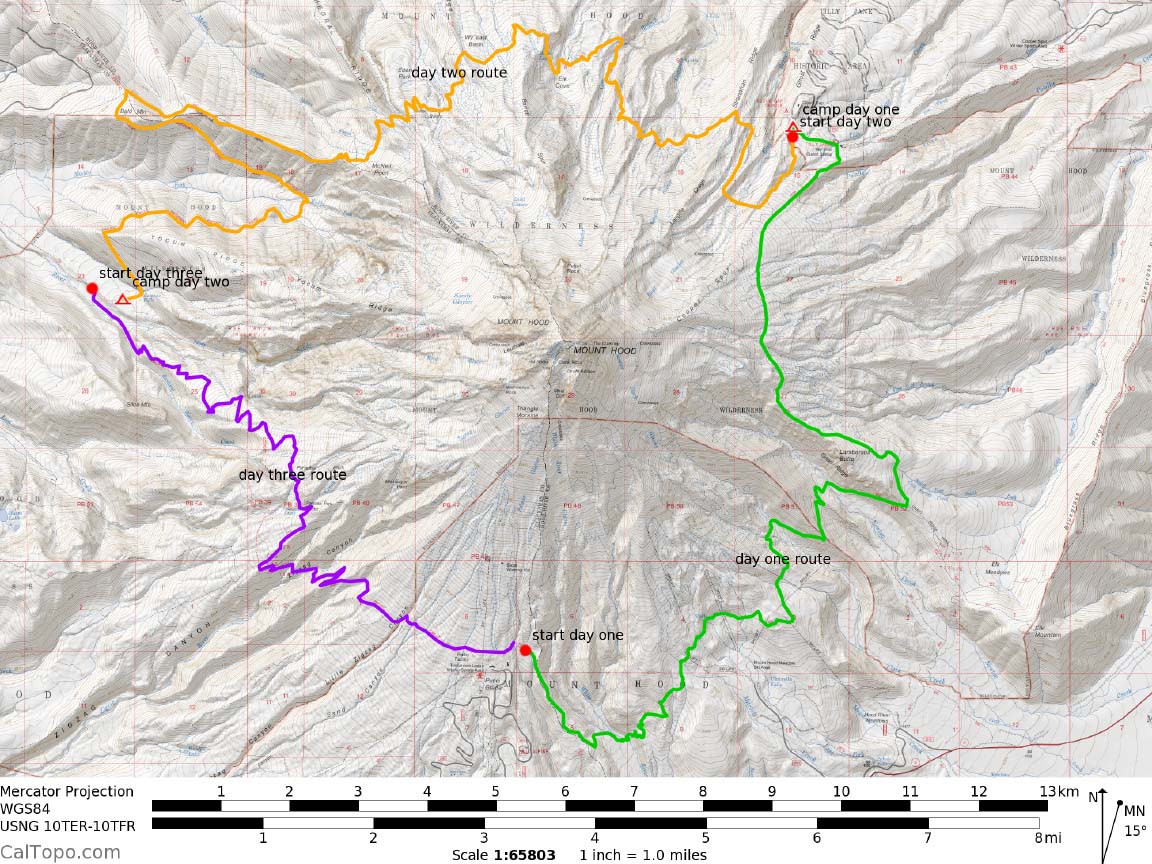
Elevation and distance per leg
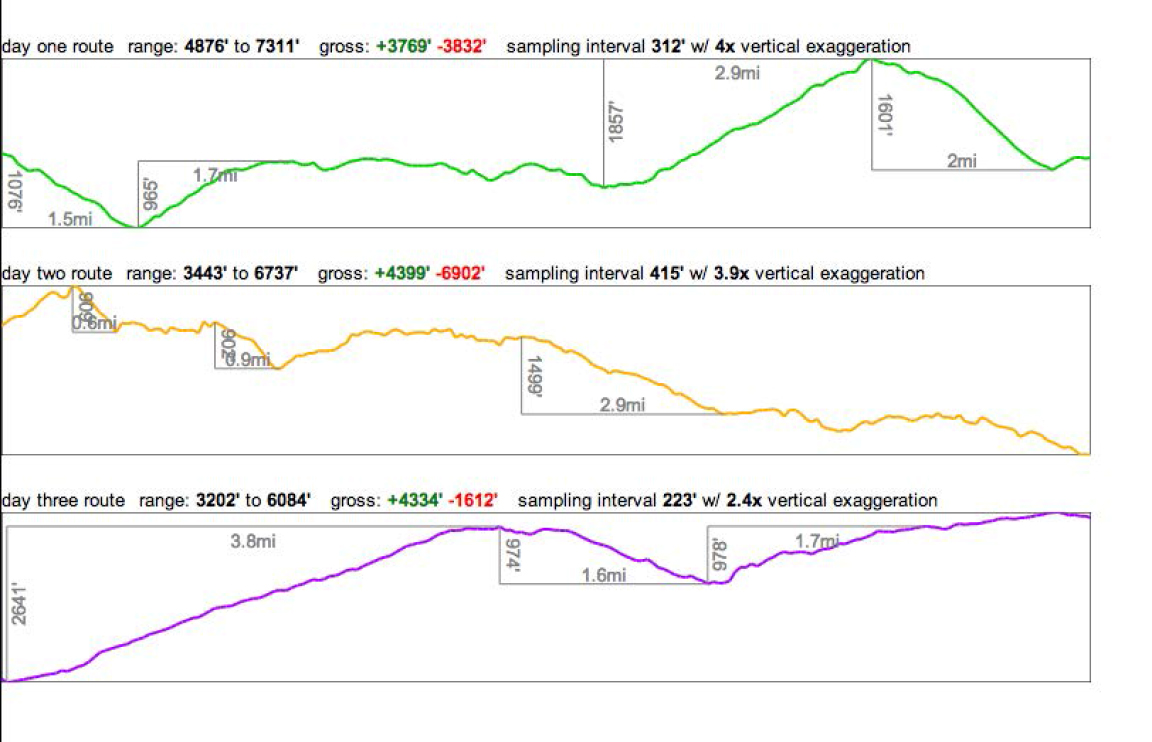
Leg 1
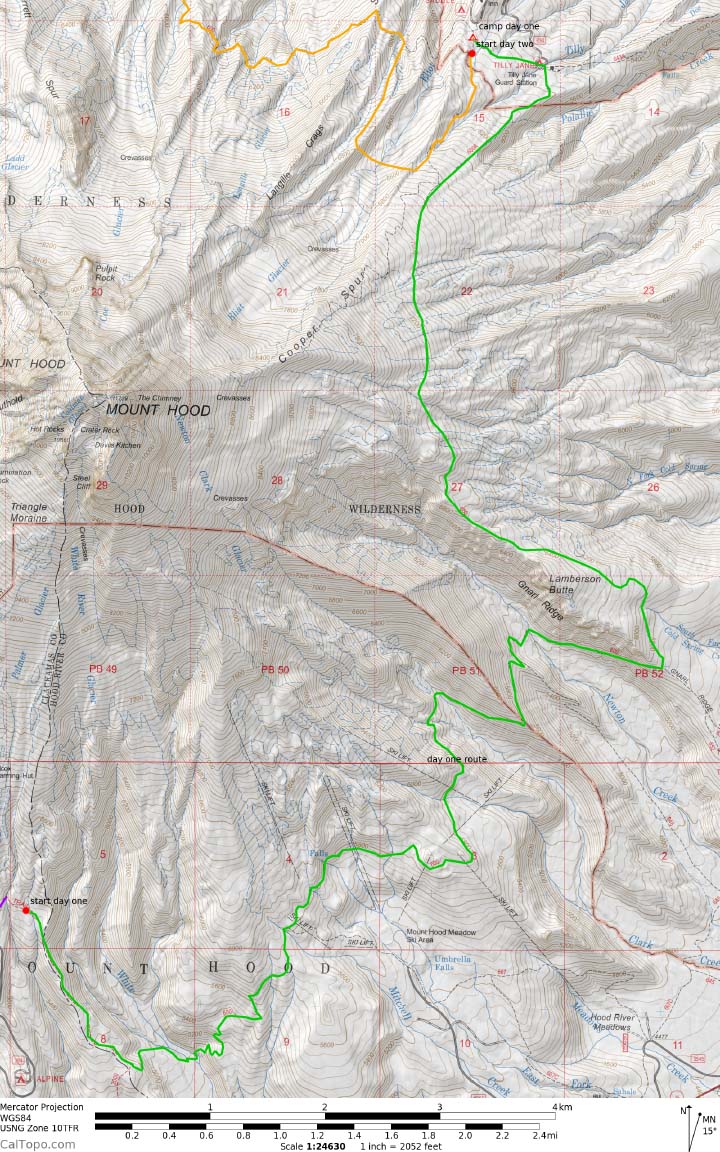
Leg 2
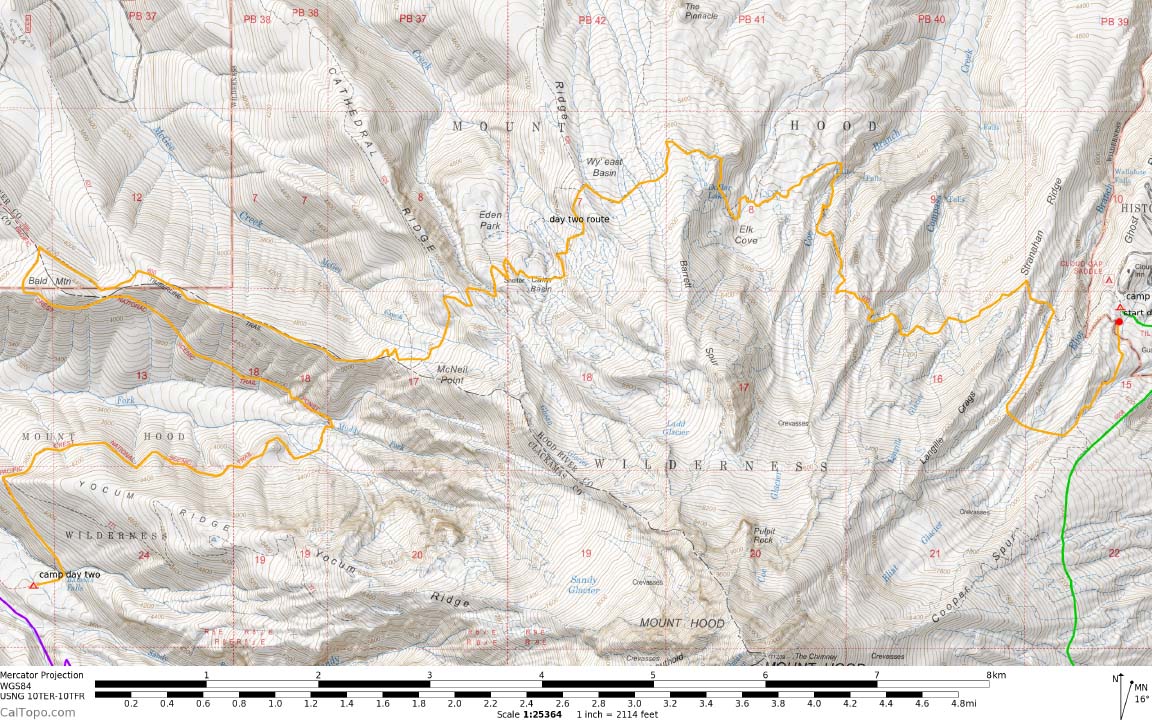
Leg 3
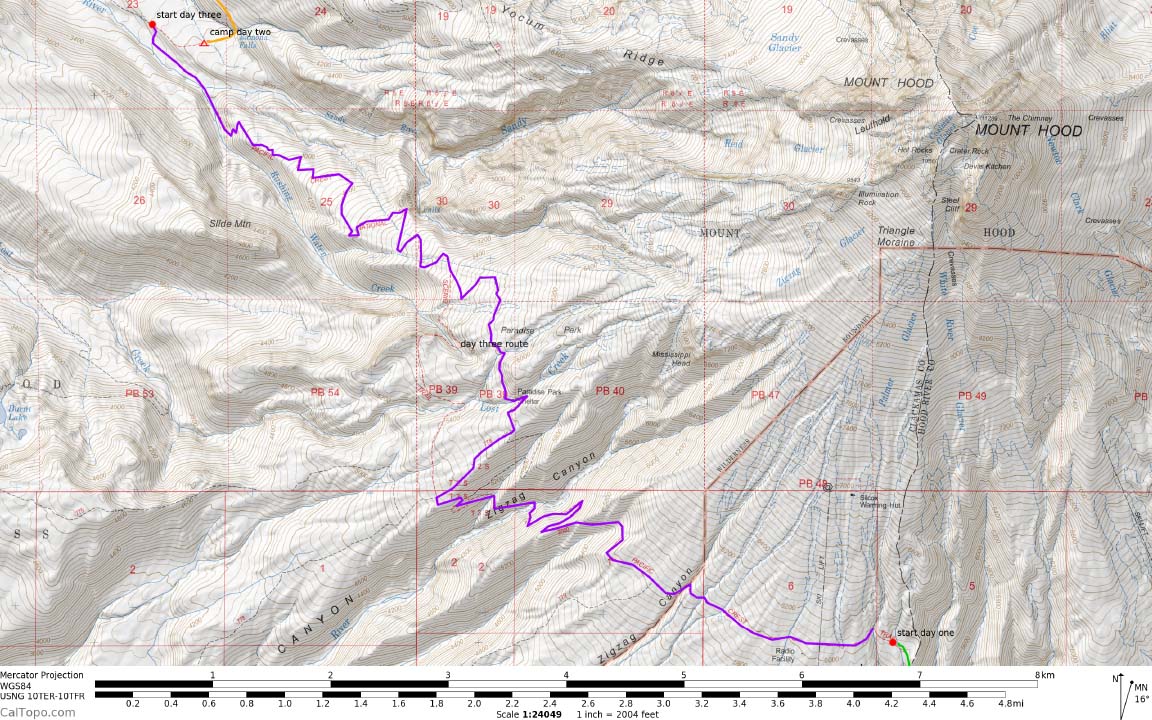
Inspiration
- Information on the Elliot Glacier / Elliot Crossing closing
- Route breakdown via Portland Hikers
- Ultra-light gear list example
What I learned from 2014
How to pack it all
- Big REI stuff sack - Food
- Small REI stuff sack x2 - Clothes (1 warm, 1 cold)
Snacks
- Jerky, Haribo, M&Ms, Gorp
- Every 2 hrs: bars and GUI (16-20)
- More GUs, less bars
- Cheap plastic bag for garbage
Lunches
- PB tortillas, banana chips
- Salami** (pre-cut) and triscuits
- No tuna (too much water, stinky)
Post hike
- sweatpants and a clean shirt
- Van’s slip ons
- foam roll
- chips and shitty, cold beer
What I brought in 2014
Packed weight
- Backpack (REI Flash 45, M) = 2 lbs, 3 oz
- Food = 8 lbs (2 lbs per day)
- Water (Osprey 2.5L) = 5 lbs (2.5 liters, re-fill every day)
- Clothes = ?
- Sleeping bag (MH Tallac 35º) = 2 lbs
- Sleeping pad (REI Flash L) = 1 lbs Total weight = ~26 lbs
Pack distribution
- Bottom = sleeping bag, pad, pillow
- Next = clothes; cold bag, warm bag
- On back = food bag, water
- Outside of pack = poles
- Head = snacks, phone, sunscreen
- Head (inside) = emergency stuff
On body
Cold gear
- Next Adventure beanie
- Running gloves
- HEAT lightweight longsleeve
- Smartwool socks x1
- NB running tights
- Running shorts (over tights)
- Salomon (red) rain jacket
- Smartwool neck warmer
Warm gear
- Running shorts, x2 (Nike 5”, 7”)
- Running shirt x2 (Nike Dri-Fit)
- Feetures socks x2
- Tevas (if there’s room)
All the time
- Trail shoes (La Sportiva Wildcat)
- Myles black vented hat
- Sunglasses
- Yellow bandana
Gear
Emergency
- Matches
- Duct tape
- Parachute cord
- Wallet, keys
- Map
- Chapstick
- Ear plugs
- Toilet paper
- Band-Aids & Neosporin
- Pepto Bismol
- Ibuprofen
- Benadryl
On hand
- Watch (Garmin Forerunner 235)
- Ankle gaiters
- Sunscreen spray
- Sunglasses
- DEET
- Headlamp, extra AAs
- Bike water bottle
- Aqua Mira
- iPhone (airplane mode)
- Neck bandana
- Pocket knife
- Trekking poles
Sleep
- Sleeping bag
- Sleeping pillow
Chad
- Tent
- Stove
Food
Utensils
- Titanium cup / bowl
- Spork
Eat
- Bars (x30) - Clif, Pro, etc
- Jerky x2
- GORP x2 - pumpkin seeds, pecans, pine nuts, macadamia
- PnB pretzels x2
- Tortillas x2
- Triscuits x1 bag
- Chianti Artisan Salami x2
- Tuna packets x4
- String cheese or hard cheese (slices) x3
- Chocolate candies x3
- Starbucks VIA coffee
- Hammergels
- Hammer Drink
- MH Dinners x2
- Energy chews x2
Meals***
- GORP, bar, cheese
- PnB, dried cherries, tortilla + GORP
- Nutella, banana chips, tortilla
- Tuna, string cheese, tortilla
- Pepperoni, hard cheese, tortilla
- GORP, cheese, crackers
- GORP, PnB, crackers
- Bars, cheese, crackers
**A word on packing salami:
Some dry sausages are shelf stable. Dry sausages include: Soppersata (a name of a salami); Salami; air-dried Pepperoni; Cerevelat; Lola, Lolita, and Lyons sausage (mildly seasoned pork with garlic); and Genoa salami (an Italian sausage usually made from pork, but might contain a small amount of beef and be moistened with wine or grape juice and seasoned with garlic).
via “Which sausages are shelf stable?”